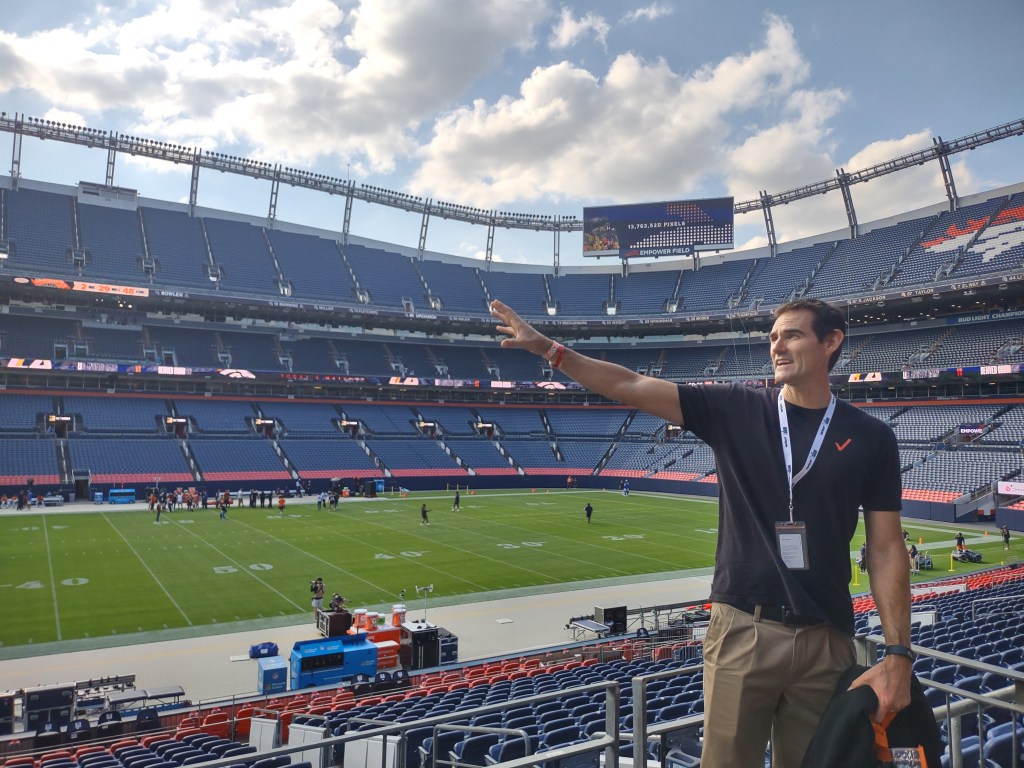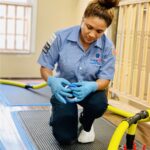
Taylor Swift, Ed Sheeran fans test Verizon’s network at Empower Field
Last Updated on August 30, 2023 by Admin
[ad_1]

When Taylor Swift and Ed Sheeran came to Empower Field at Mile High for concerts this summer, the hugely popular signers tested the stadium’s wireless capacity in ways it hadn’t ever been tested before.
Actually, it was the fans, not the singers, who were doing the testing, moving 2.5 times the amount of data seen in a typical Denver Broncos game, said Russ Trainor, a senior vice president of information technology for the team during a media tour Saturday.
Taylor Swift fans edged out Sheeran fans, moving 25 terabytes and then 26 terabytes on the two nights of her Eras tour in mid-July. That compares to the 22 terabytes Sheeran fans moved on Aug. 19, even though there were an extra 10,000 of them packed on the field, setting a single-event attendance record for the stadium at 85,233.
To put a single terabyte in perspective, it is equivalent to about 250,000 photos, the data in 250 movies or 500 hours of HD video, or the equivalent of 6.5 million documents stored as average-sized Office files, according to DropBox.
Fans of both pop stars handily beat Broncos fans, who consume 9 to 11 terabytes in a typical regular season game, Trainor said. The younger age of the Swift and Sheeran fans explains some of the gaps in data demand, as did the events themselves — a lot more selfies and data-hogging video streams were being shared.
Matt Burns, a senior manager of network performance in Colorado for Verizon, the official wireless provider for the Broncos, said the Sheeran concert in particular was challenging. The provider’s antennae are designed to cover fans in the stands, not to point down into the field itself, where the Sheeran team packed another 10,000 fans.
Most people entering the stadium won’t ever notice the more than 1,000 cellular antennas that Verizon has hidden both inside and outside the stadium unless they make a deliberate effort to find them.
Many of the antennas are hidden inside plastic covers inserted into handrails on every row up and down the stadium. Others hang down from beneath the club-level overhangs and some beam up from the divider separating the stands from the field.
The antennas divide the stadium into 96 separate sections to better handle data traffic. But even with that much coverage, dead spots remain. Boxes, painted in a bright orange, are tucked underneath individual seats to tackle that problem.
Antennas are peppered throughout the walkways in the interior of the stadium, and outside, grabbing signals from fans as they walk through the parking lot and enter the stadium.
Whenever fans get excited and start banging on everything or anything they can hit or kick, Trainor said he gets nervous that they might knock out cellular or Wi-Fi service. But so far, the devices have held up to the abuse, he said.
The newest antennas to join the Verizon network are 5G and work with millimeter-wavelength signals. There are 15 of them and they can provide extremely fast speeds of 4 gigabits per second. That speed drops as more devices connect and the signal doesn’t reach very far. But those wavelengths can handle a large number of devices in a confined space, making them ideal for crowded stadiums.
Burns said Verizon tries to future-proof as it adds capacity. Growth in cellular traffic rises about 20% to 30% a year as people stream more video and use more data-consuming applications on their phones. Even the data-hungry Swift fans, however, consumed only half of the system’s capacity.
[ad_2]
Source link




